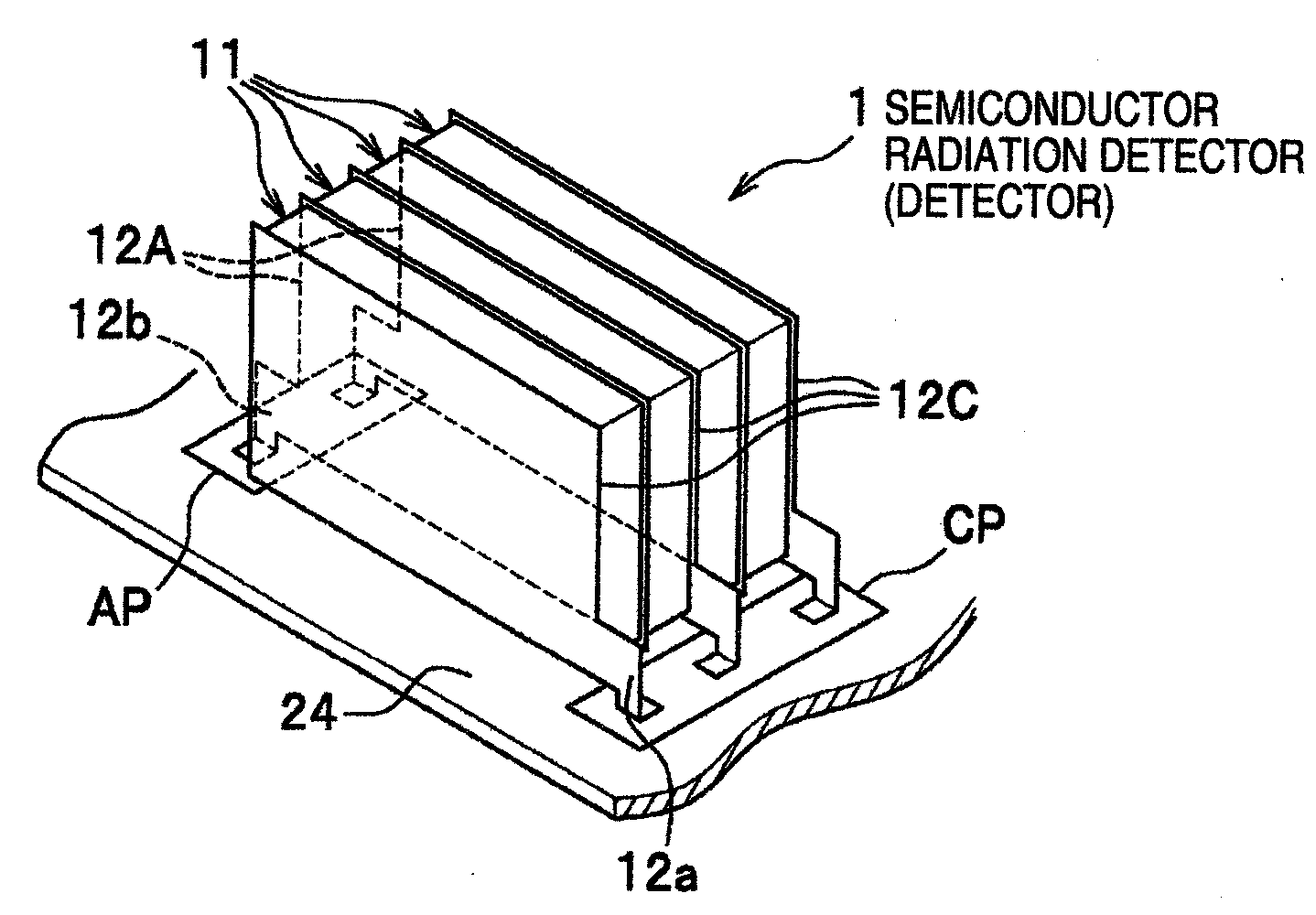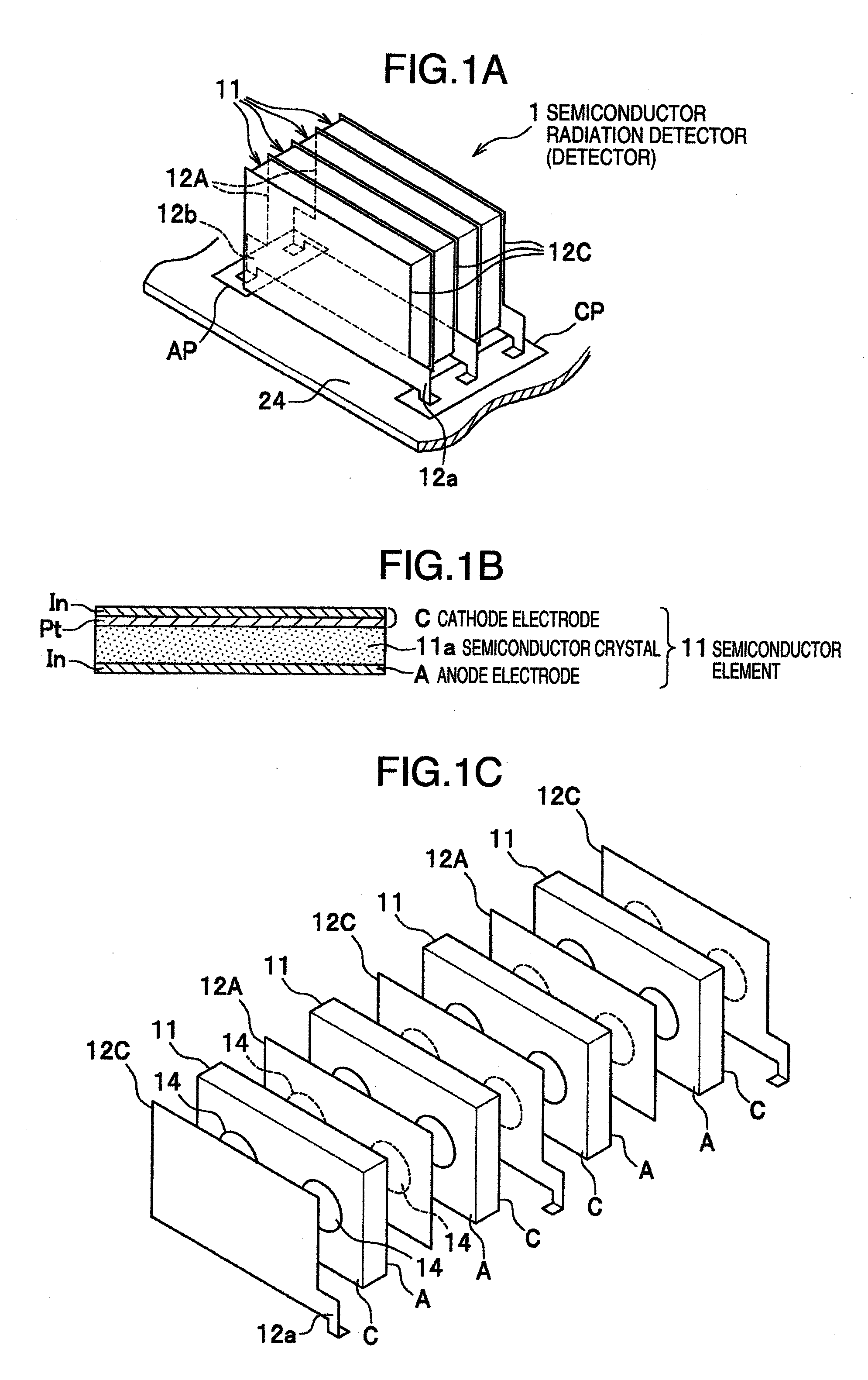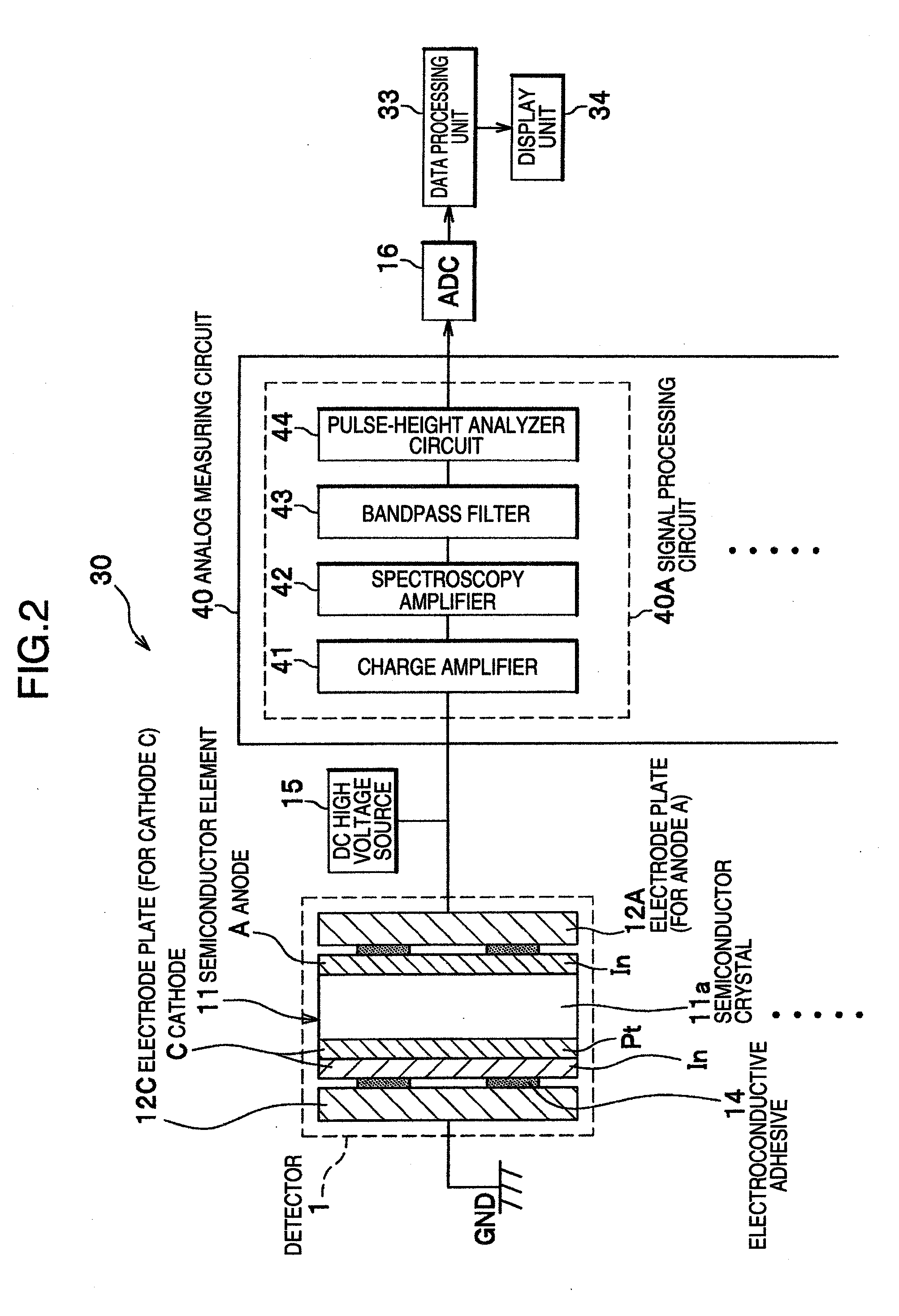Semiconductor radiation detector and radiation detection equipment
a radiation detector and semiconductor technology, applied in the direction of electrical equipment, semiconductor devices, radiation controlled devices, etc., can solve the problems detector increase, and crystal dislocation liable to occur disadvantageously in the semiconductor crystal, so as to prevent the reduce the hardness, and prevent the effect of deterioration of the detection characteristic of the semiconductor radiation detector
- Summary
- Abstract
- Description
- Claims
- Application Information
AI Technical Summary
Benefits of technology
Problems solved by technology
Method used
Image
Examples
first embodiment
[0030]The semiconductor radiation detector (hereinafter referred to simply as the detector) 1 according to this embodiment, as shown in FIG. 1A, is a stack structure including four semiconductor elements 11, and electrode plates 12C, 12A arranged between and at the ends of the semiconductor elements 11.
[0031]The semiconductor elements 11, as shown in FIG. 1B, each have a semiconductor crystal 11a formed in the shape of a flat plate, and have a thin-film electrode formed on each entire side surface thereof. Each semiconductor element 11 is formed with a cathode electrode (hereinafter referred to as the cathode) C on one surface thereof and an anode electrode (hereinafter referred to as the anode) A on the other surface thereof.
[0032]The semiconductor crystal 11a constitutes an area for generating the charge by interaction with the radiation (γ ray, etc.), and is formed by slicing the single crystal of CdTe, CdZnTe or GaAs. According to this embodiment, each semiconductor crystal 11a ...
second embodiment
[0086]A detector according to a second embodiment of the invention is explained. The detector 1A according to this embodiment, as shown partially in FIG. 11, is different from the first embodiment in that both the electrodes of the cathode C and the anode A are in a double stack structure, each with the first layer of Pt and the second layer of In. Incidentally, the semiconductor crystal 11a is in the shape of a tabular rectangle similar to the first embodiment.
[0087]Now, the fabrication process of the semiconductor element 11′ having the cathode C and the anode A of this structure is explained.
[0088]First, Pt is deposited to the thickness of about 50 nm by the electroless plating method on the two surfaces of the semiconductor crystal 11a thereby to form the first layer of the cathode C and the anode A.
[0089]After that, In is deposited to the thickness of about 100 nm by the electroless plating method on the first layer of the cathode C and the anode A thus formed thereby to form t...
PUM
 Login to View More
Login to View More Abstract
Description
Claims
Application Information
 Login to View More
Login to View More - R&D
- Intellectual Property
- Life Sciences
- Materials
- Tech Scout
- Unparalleled Data Quality
- Higher Quality Content
- 60% Fewer Hallucinations
Browse by: Latest US Patents, China's latest patents, Technical Efficacy Thesaurus, Application Domain, Technology Topic, Popular Technical Reports.
© 2025 PatSnap. All rights reserved.Legal|Privacy policy|Modern Slavery Act Transparency Statement|Sitemap|About US| Contact US: help@patsnap.com



